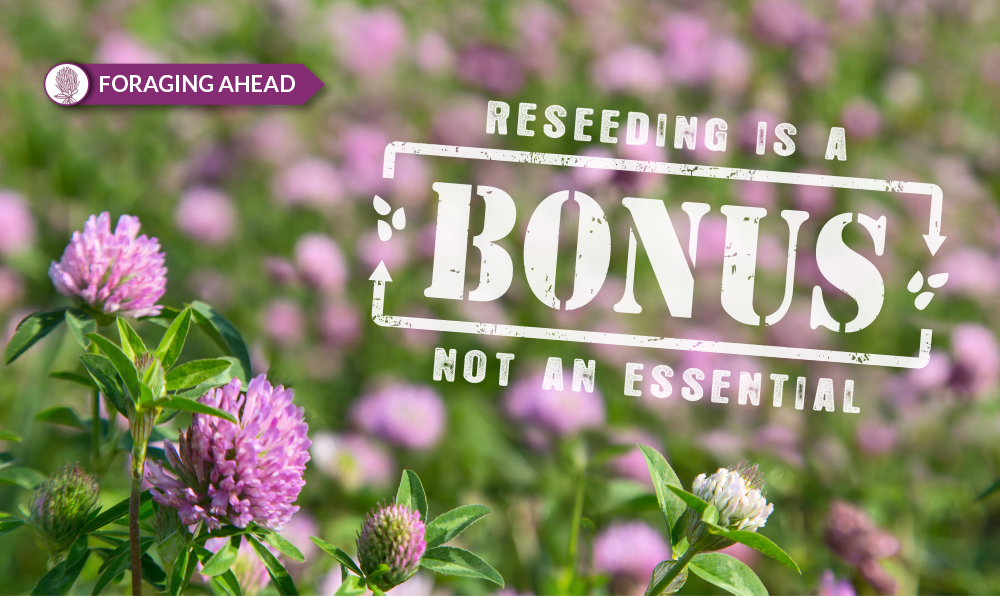
Foraging Ahead with Dr. Don Ball: Forage crops and reseeding
When discussing the characteristics of a forage crop, whether with a scientist at a professional meeting or a cattleman at the local coffee shop, a phrase that often gets dropped is “and it’s a good reseeder.” This is often added as an afterthought, much like a car salesman might state, “and the tires are good” or “and it doesn’t use oil.”
Reseeding is most commonly associated with annuals, but even with perennials, the subject frequently arises (as in “thickening stands via reseeding”). Producers like the sound of the term “reseeding” because it implies that a long-term stand is possible with little or no effort. Many forage crops have potential for reseeding, but its occurrence can depend on any of several factors.
What precedes reseeding?
For a forage crop to reseed, it must first produce seed. Most forage crops will make little seed if heavily grazed during the seed production period because grazing reduces seedheads, or blooms. Having only a light stocking rate or removing livestock during the blooming (or heading) period is usually required for a forage crop to make a substantial quantity of seed.
Even when blooming is unhindered, plants may not actually make much seed for a variety of reasons. For example, the clover head weevil can greatly reduce seed production by crimson clover, and the vetch bruchid can devastate seed production of some vetch species. Diseases, drought, flooding or other stresses can greatly reduce seed yields as well.
In addition, seed production from cross-pollinated species (this applies to most grasses) can be largely prevented by heavy rains or strong winds during the pollination period. Similarly, many legumes are dependent upon insects for pollination (no insects = no pollination).
Even when lots of seed is produced, there is no guarantee of a subsequent new crop of young plants. Much of the seed of some clovers often germinates at the wrong time, resulting in seedling death. Much of the “hard seed” that species such as arrowleaf clover make may be so hard that it takes many years for the seed coat to deteriorate enough to allow germination. With some types of seed, various birds, insects, and other creatures may consume or spoil much of the seed while it’s on the soil surface.

Field conditions matter, as always
Conditions in the field where seeds have been deposited also have a great influence on seed germination and seedling establishment. Extremely hard soil, a thick mulch of plant residue, or a thick stand of actively growing competing plants may spell doom for new seedlings. Clipping or grazing summer pastures closely just before the expected time of germination is commonly recommended and also favors obtaining reseeded stands.
Similarly, tillage just prior to the normal date of germination will usually greatly facilitate the establishment of reseeded stands. Tillage can simultaneously “plant” seed in the soil, help reduce or eliminate plant residue and competing plants, and may provide some scarification of hard seed. Sometimes nothing more than lightly “scratching” the soil can be quite helpful.
View reseeding as a bonus, not an essential
Examples of successful long-term reseeded plant stands are plentiful, but reseeding is affected by many factors. Even planting into a prepared seedbed, which is less risky than reseeding, doesn’t guarantee a stand. A prudent approach is to manage forage crops for reseeding when there is no great penalty for doing so, and otherwise to plant seed of forage crops as needed. Reseeding should normally be viewed as a bonus or a possibility rather than as a high-priority objective.
Foraging Ahead is a bi-weekly column presented by Ragan & Massey and written by Dr. Don Ball, Professor Emeritus at Auburn University. Dr. Ball is one of the authors of the popular book “Southern Forages,” available here.
Follow Ragan & Massey!
Be sure to follow Ragan & Massey on Facebook and Twitter for daily updates, and check back here every week for more in-depth expertise, advice and product updates.